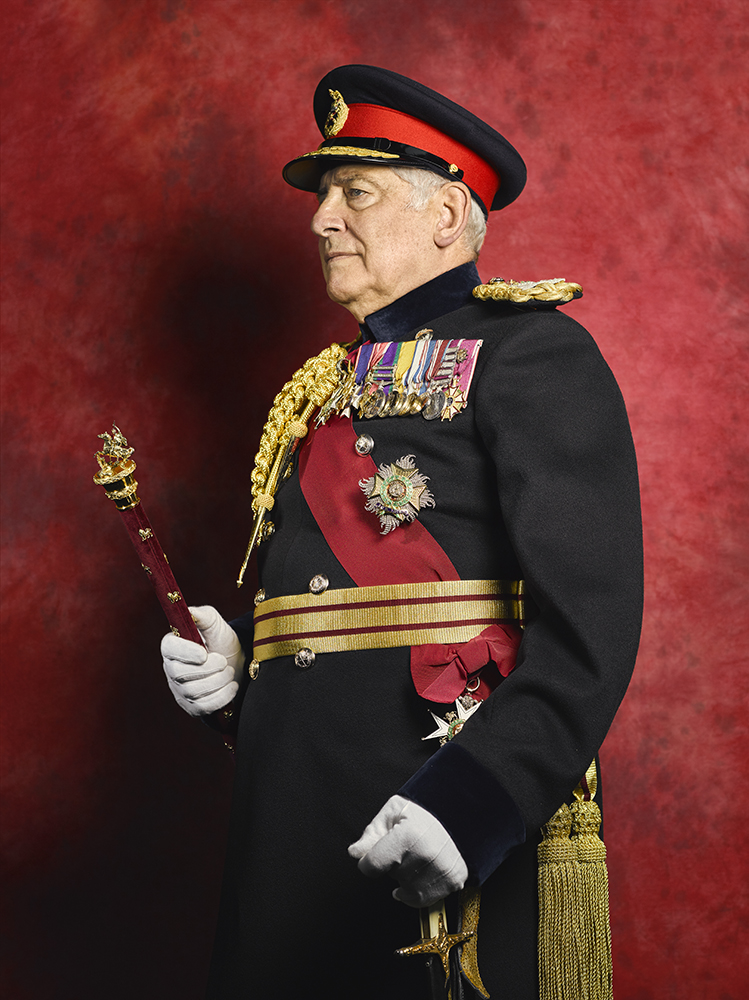Soldiery as a project, has given me the opportunity to indulge my historical ambitions. One of these creative urges has been to photograph a British Field Marshal.
Field Marshal is the most senior rank of the British Army. Higher than all the Generals I’ve captured thus far. Considered a five star rank in today’s modern militaries. In the British Army, Field Marshal has been the most senior rank since 1736.
Since the end of Empire, the rank has become somewhat redundant, this is due to the reduction in the size of Britain’s Armed Forces. The rank is now ceremonial, a gift of recognition from the sovereign to senior military figures, and bestowed on members of the Royal Family.
Field Marshal The Lord Guthrie Portrait Sitting (Rory Lewis Photographer 2017) London
I wrote to several Field Marshal’s and to my delight a reply, Field Marshal The Lord Guthrie accepted my invitation to sit for a Portrait in London.
Field Marshal the Lord Guthrie GCB, LVO, OBE, DL was Chief of the General Staff, the professional head of the British Army, from 1994 to 1997 and Chief of the Defence Staff from 1997 until his retirement in 2001.
Guthrie’s military career saw service with the Welsh Guards and the Special Air Service; he was closely involved in military operations in Northern Ireland and provided advice to the British Government during the Bosnian War and the Kosovo War.
In 2012 Lord Guthrie was handed his Field Marshal’s Baton, in recognition of his remarkable leadership and service by Her Royal Highness Queen Elizabeth II . You can view a Pathe News Clip of another Field Marshal Jan Smuts being handed his Baton back in 1941.
Field Marshal The Lord Guthrie Portrait Sitting (Rory Lewis Photographer 2017) London
(Below Field Marshals Baton Presented to Field Marshal Jan Smuts OM, CH, ED, PC, KC, FRS)
The Baton is the main symbol of office, only given to Field Marshals. It stems back to ancient origins; namely those of the Roman Empire. A short heavy white Baton was a symbol of the Imperial Mandate given to Roman Military Legates. The Legate would hold the baton upon high, proclaiming, “above your head and mine to represent the power of the emperor”.
Sir Thomas Lawrence (1769-1830) Arthur Wellesley, 1st Duke of Wellington (1769-1852) 1814-15
The British Field Marshal’s Baton is a symbol of the magnitude of office. The figure of St George and the Dragon is at the top, and at the bottom an inscription from The Queen to Lord Guthrie. The body of the Baton is covered with red velvet.
Looking for inspiration I started with Sir Thomas Lawrence, studying his portraits of the Duke of Wellington. Neo Classical in Style; Lawrence painted the Iron Duke on several occasions. His most vivid depiction, a triumphant portrait of Wellington which dominates the Waterloo Chamber at Windsor Castle. Lawrence’s composition is that of victory, heralding Wellington as the finest of military commanders and the liberator of Europe.
Douglas Haig, 1st Earl Haig by Bassano Ltd whole-plate glass negative, 19 July 1921



